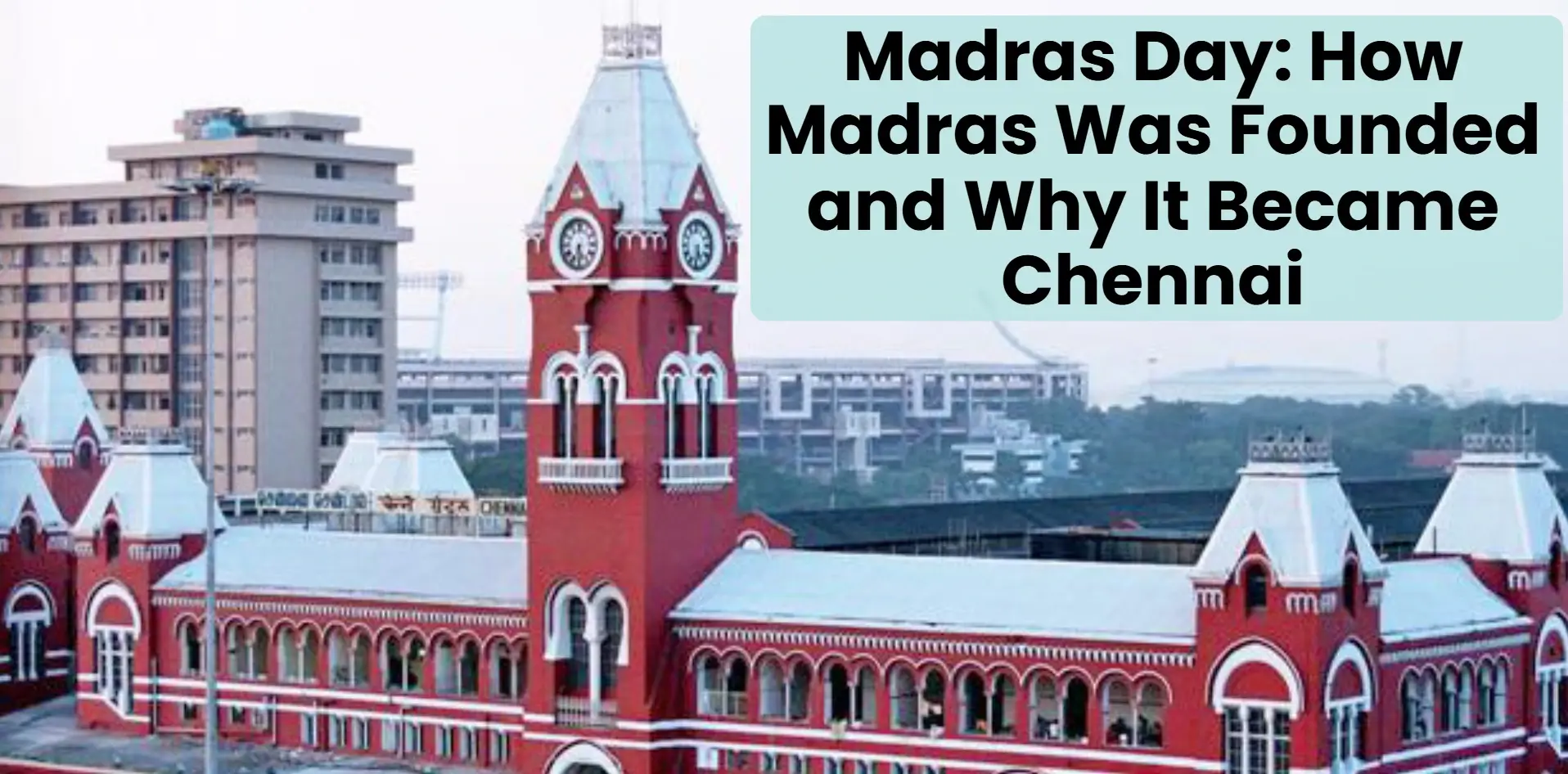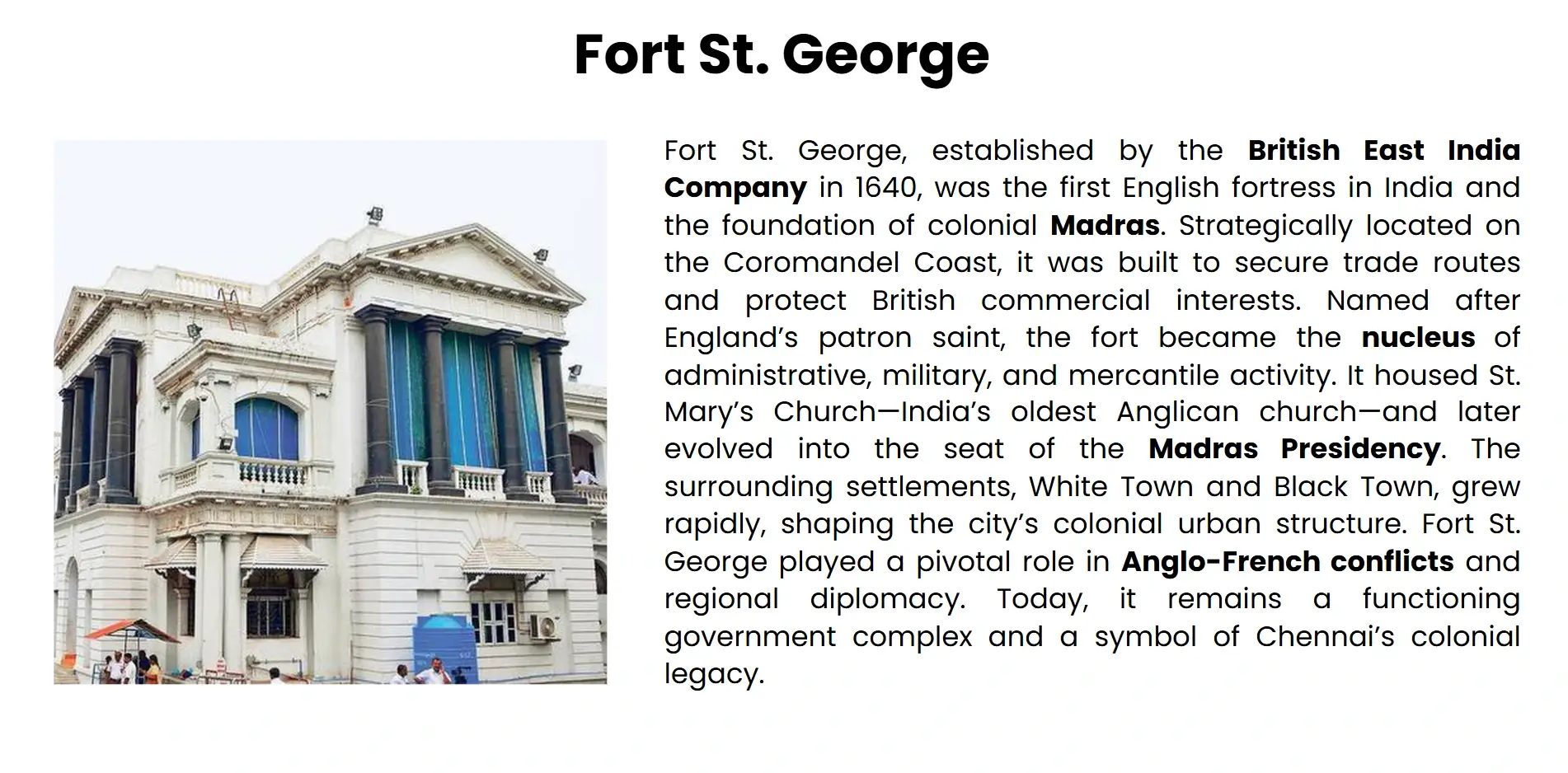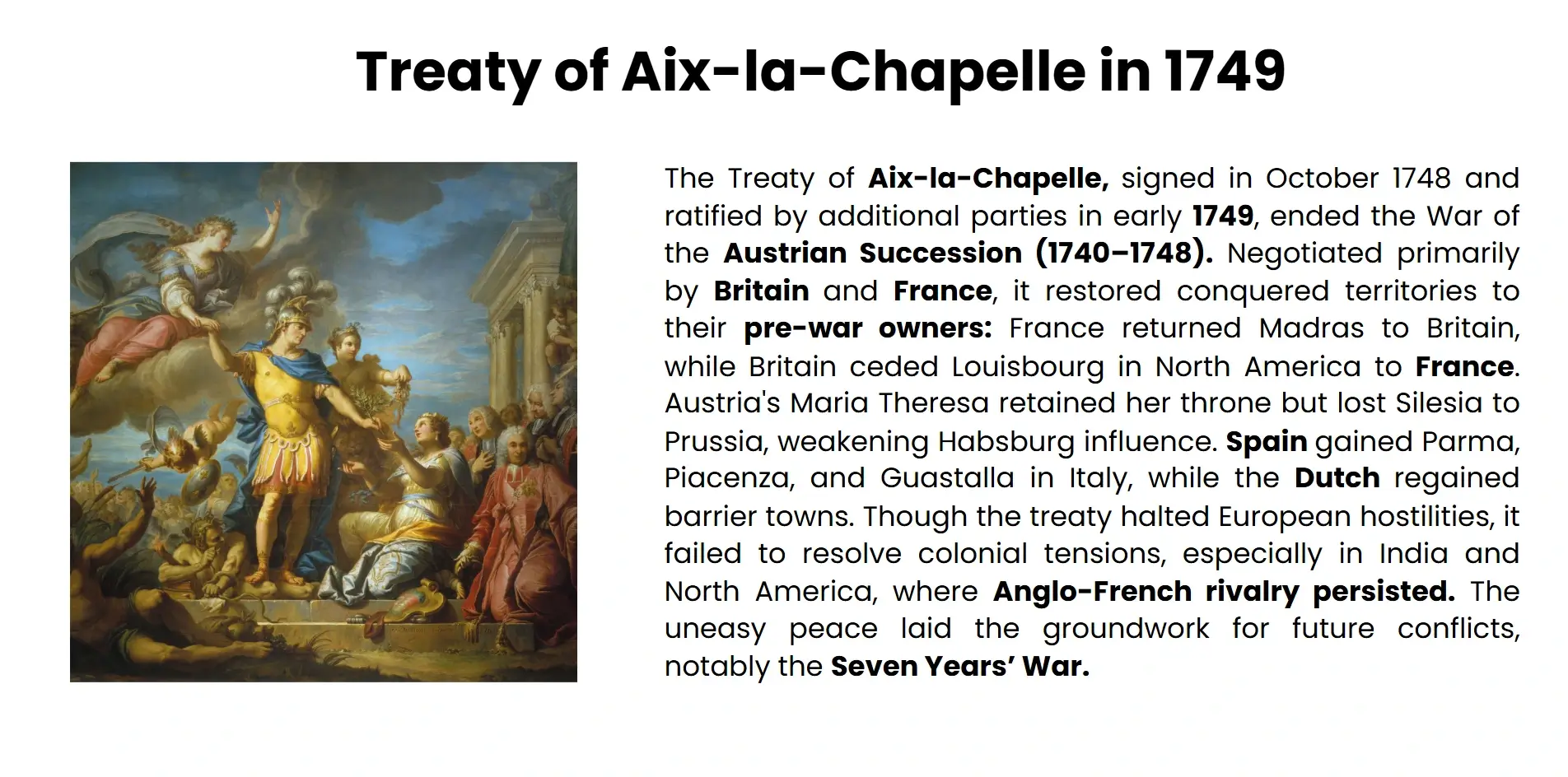The article investigates the formation of Madras in 1639, its colonial history, and cultural heritage and how it has become Chennai- a celebration marked by Madras Day.Madras Day 2025 Today, August 22, celebrates the 386th anniversary of the founding of Chennai, the southernmost Indian city once known as Madras. Madras Day is an annual event that brings the city together to joyfully commemorate its beginnings.

The state and city continued to be known as Madras when British administration ended in 1947. They were a part of the broader Madras presidency, which included elements of other South Indian states.One will find that every year on August 22, Chennai, also known as Madrasapatnam, celebrates Madras Day to commemorate the establishment of the city. This is an important day in 1639 when the East India Company purchased a parcel of land along the Coromandel Coast from the local Nayak monarchs that was an act which marked the birth of one of the most dynamic cities in India. A small trading post became known as Fort St. George, the center of the colonial Madras and a foothold of the British stratification in South India.Madras expanded fast, and it was influenced by trade in the waters, cross-cultural exchange, and political turbulences. Being a melting pot of Tamil culture, colonial-era design, and international influences, it has grown into one of the most cosmopolitan places. The city has had a significant role over centuries in the freedom movement and the emergence of Dravidian politics in India, and the blossoming of education and arts.The city was formally renamed Chennai in 1996 to express a stronger local identity and sense of regionalism. However, Madras does not die-instead, it is commemorated in remembrance, memory walks, and the spectacular Madras Day celebrations. This Article follows the history of the city as it evolved, since the early days of the city, under British rule, up to the present times, exploring the importance of remembering Madras to get to the soul of Chennai.
Historical context- Prior to the British
Between the arrival of the East India Company in 1639 and the end of its existence as an independent state, the land that would come to bear the name of the city of Madras (now Chennai) was a patchwork of successful Tamil communities, Seaborne Trade, and veiled political authority.
Local Native Habitation and Cultural Survival
The ancient Tamil people, with their strong Cultural and Religious roots, had their coastal stretch in the south-eastern part of India and especiallyin Chennai. Settlements like Mylapore, Triplicane, and Thiruvanmiyur were both residential (and even spiritual) centres bearing their ancient temples, Kapaleeshwarar and Parthasarathy. These towns portrayed the continuity of Dravidian cultures with Tamil,which had become the default language and literary medium. The local economy of the region was integrated with the production of crops and crafts, and domestic trade to create a stable aspect of social and economic life before the interference of the colonialists.
Dynastic and Administrative Framework
Politically, the region came under the sway of various South Indian kingdoms, the Pallavas, the Cholas, and then the Vijayanagara Empireat later times. These rulers also instituted systems of administration that controlled land revenue, patronage of temples, and the organization of armies. By the early 17thcentury, the Nayaks of the Vijayanagara Empire had taken control of the region and operated semi-autonomously, due to which they maintained diplomatic relations with foreign traders. Damarla Venkatadri Nayak, a local chieftain, was instrumental in this British land acquisition in 1639, which speaks tothe decentralized nature of governance in place.
Trade and Presence inthe Sea
The Coromandel Coast held a very crucial position in a network of trade in the Indian Ocean, with Arab, Chinese, and Southeast Asian merchants regularly visiting it for many centuries. Portuguese and Dutch traders had moved onto the coastline, carrying on imports of spices, textiles, and gemstones, by the 1500s. Specifically, Mylapore had a Portuguese settlement, as well as the presence of Christian missionaries, which can be identified as an early influence of the Europeans. Such interactions gave rise to the interest of the East India Company in the region, which was strategically located in terms of reaching the sea and having business expansion.
Appeal tothe East India Company
The British were attracted by this region because of trade as well as relative political stability,and also its nearness to those enclaves that already existed in Europe. This land grant of 1639 gave them the right to create Fort St. George, which led to the first official administration of the colony. Such growth, however, was superimposed over centuries of native rule, cultural abundance, and transoceanic trade.
The 1639 Land Deal: Birth of Madras
In 1639, a land deal between the British and the local rulers opened the way for Madras, one of India's greatest port cities, to grow.
Purpose and Business Interest
By the early 17thcentury, the East India Company had established itself as a large trading tantrum in India and needed safe strongholds on the Indian coast to broaden its trade in textiles and spices. It had strategic benefits because of its location, due to its nearness to inland cotton markets and sea routes. A company factor called Francis Day, who was based at Masulipatnam, saw the fishing village of Madrasapatnam as a prime choice for a fortified settlement. Its comparative political stability and availability of deep water anchorage made it commercially feasiblefor the long-term interests of the British people.
Negotiation with the Nayaks of Poonamallee
The land trade was negotiated between Francis Day and Damarla Venkatadri Nayak, a local king who was the guardian of the fallingVijayanagara Empire. As a part of this episode, the Nayak decided to rent to the British a piece of land along the coast in exchange for a very small annual rent and pledges of trade concessions. This signing of the agreement became official on August 22, 1639,and it was the start of territorial ruling by the British in South India. It was not only a commercial lease, but a manoeuvre of diplomacy that enabled the British to gain sovereignty over a foreign enclave.
Building of Fort St. George and Urban Genesis
Following the purchase, in 1640, the British started construction on Fort St. George, which would later become the center of colonial Madras. The fort was the location of warehouses, the offices of the administration and resident quarters, which eventually attracted merchants, artisans and laborers. Two separate settlements sprang around the fort:White Town, which consisted of the European settlers, and Black Town,in which the local populations and traders lived. The basis of colonial urban planning and governance was this spatial segregation.

Long Run Consequences of Land Deal
The 1639 pact triggered the process of a coastal village becoming a metropolitan city. It helped the East India Company to strengthen its hold, which eventually made Madras the capital of the Madras Presidency. The real estate business was also a demonstration of early colonial diplomacy, which tried to dress the commercial facet of the business using legal agreements with the indigenous governors. Over the course of time, Madras emerged as a center of political, cultural, and economic life, which defined the South Indian development trend of the colonial and postcolonial period.
The Urban Development and Colonial Expansion
This process saw Madras develop quickly after the founding of Fort St. George in 1640 into a regulated colonial city, moulded through the processes of trade, politics, and segregation.
Fort-Centric Town Planning and Segregated Settlements
By fortifying it, the British established Fort St. George as Madras's commercial and administrative hub. The areas around it became divided into two different regions: White Town,which was occupied by Europeans, and Black Town,which included native traders, artisans, and labourers. This territorial division was a projection of colonial orders and radicalized politics. With the grid-work pattern of the fort, the European influence had its share of formal zoning, sanitation needs, and civic infrastructure that were a striking contrast to the organic townships. In due course, Black Town grew into George Town, which became a thriving commercial center.
Municipal Governance & Institutional Foundations
Among the earliest cities of India to formalize colonial rule was Madras. In 1688, the Corporation of Madras was formed,which was the first municipal body in India charged with the duties of controlling the city, finances, and other public works. This represented a change in settlement that was informally based on trade to bureaucratically organised urbanism. The urban governmental structure consisted of courts, tax authorities, and policing institutions that formed the foundation of colonial values in jurisprudence and governance. Such institutions not only helped sustain British domination but also brought in new forms of civic as well as dispute practice.
Economic Growth and Sea Trade
Base issues in Madras were significant elements of the East India Company trade route. The city produced textiles, indigo,spices, and saltpetre it attractingArmenian, Portuguese,and Indian traders. The expansion of the port led to complementary industries-ship building, warehousing, and banks and this resulted in the making of Madras into a commercial capital. By the 18th century, it was competing with Bombay and Calcutta in terms of trade volume. The economic vibrancy of the city attracted immigrant workers to it not only among the neighbouringsouth Indian states but also beyond, including the west and East Indian states as well.
Colonial wars and the strategic value
Madras was well-placed and therefore was targeted when there were Anglo-French rivalries in the Carnatic region. The city was briefly taken over by the French in 1746, after which the city was returned under the Treaty of Aix-la-Chapelle in 1749. These wars indicated the absolute importance of Madras as a sway in imperial geopolitics. The British developed the city using military and civic planningfor the fortification of the city. This militarisation of the city construction determined this urban logic and consolidated the city as a colonial base.

Cultural and Political Heritage
During colonial and postcolonial periods, Madras (later Chennai) developed into a center of political consciousness and cultural innovation. The mixed character of the city can be identified in its layered identity because it was a colonial administrative centre, but a bustling Tamil culturalcenter as well.
- Central to the creation of South Indian intellectual and artistic life was Madras because of the establishment of Institutions like the University of Madras and the Madras Music Academy.
- The city saw the birth of the Renaissance in the regional cultural expression in Carnatic music, Bharatanatyam, and Tamil publishing in particular, and the city became a nucleus of the same. At the same time, the development of Madras Bashaia hybrid tongue mixing Tamil, English, and Telugu marked the cultural hybridity and urban vernacular culture of urban centres.
- Madras has politically stood at the centre of India's nationalist movement and the development of Dravidian politics. It was where early work of Congress was done and where the anti-caste and regional autonomy movements, namely the Justice Party and the Dravidian leaders, were able to consolidate their ideological beliefs.
- These movements transformed the notions of political representation in Tamil Nadu and subverted the mainstream discourse of national identity.
- The legacy of the city can be found in its fusion of colonial modernity and native assertion, bringing a certain socio-political consciousness that has continued to dominate the cultural and political mood of Tamil Nadu.
The move to Chennai: Name Change and Identity
The change of name in 1996 was the first major cultural and political transformation of the city’s identity. Although Chennai had changed the name of its city due to the long colonial rule and adoption of an Anglicized name, it was entirely a name that originated in the native geography and language of the city.
- Etymologists suggest that the name Chennai may have been derived fromChennapattinam, a settlement that was named after DamarlaChennappaNayak, a local Telugu potentate whose territory included the region that was captured by the Company.
- The change of name of the city was an element of a nationwide effort in India to rename places and reassert regional identity. This change, in Tamil Nadu, coincided with the Dravidian political spirit, consisting of pride in language and cultural independence.
- The name change did not only have symbolic meaning, but was directly related to the process of decolonizing the urban landscape and memory. The appropriation, which select citizens considered as part of the re-conquest of Tamil tradition, was regarded nostalgically by others who were thinking back on the cosmopolitanism of the former Madras.
- Although it is called Chennai, the name of Madras has remained in the cultural institutions, festivals, and historical discourse, especially at times of Madras Day celebrations. Dual names are an example of the multifaceted identity found in this city, where a colonial history and the local pride exist in a favourable contradiction.
Conclusion
The history of Madras, or the current Chennai, is not merely a history of British conquest, but rather a rich narration of cultural survival, an urban reinvention, and transcendence of identity. Started as a small village of Madrasapatnam in 1639, the city has since managed to transform itself again and again to become the colonial powerhouse and then a thriving Tamil metropolis without losing its historical richness. Although the renaming of the city in 1996toChennai was a rather recent step that symbolized the regaining of the local history of the city, the history of Madras exists in its buildings, institutions and the memory of the individuals living in it. The concept of Madras Day creation was the need to remind people of the continuum of the past and the current relation, as captured in the cities. The city of Chennai is on course toward becoming a global urban centre, respecting the past makes it more civically aware, and the sense of pride towards its culture. It is important to know thisjourney not only to enjoy the history of the city, but also to make its inclusive and resilient future.